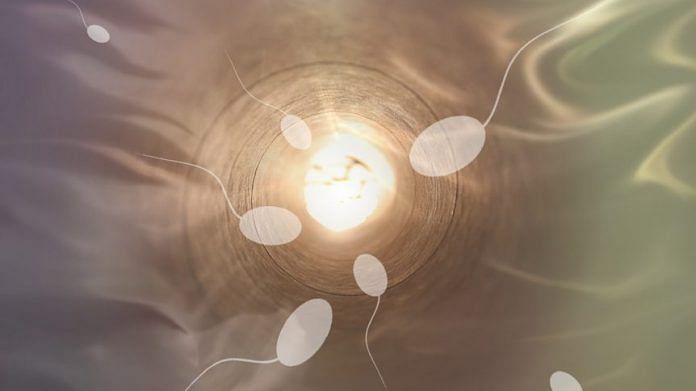
New Delhi: A study by an interdisciplinary group of scientists at Harvard University and MIT has claimed that previous studies which raised global concerns over plummeting sperm count in men are flawed and baseless. Several factors were not taken into account when earlier studies were conducted, according to the researchers.
Titled ‘The future of sperm: a biovariability framework for understanding global sperm count trends’, the study was published in the online journal Human Fertility in October 2020.
“We find that existing research follows a set of implicit and explicit assumptions about how to measure and interpret sperm counts, which collectively form what we term the Sperm Count Decline hypothesis (SCD),” the abstract of the study reads.
The researchers identified weaknesses in the SCD and proposed a hypothesis of their own — the Sperm Count Biovariability hypothesis (SCB).
“SCB asserts that sperm count varies within a wide range, much of which can be considered non-pathological and species-typical. Knowledge about the relationship between individual and population sperm count and life-historical and ecological factors is critical to interpreting trends in average sperm counts and their relationships to health and fertility.”
Missing factors
The latest study found that several factors such as nutrition, environment, the fertility of the women and migration patterns were neglected. In fact, the study indicates that since the sperm count of men has been dropping since the 1970s, this could be an indicator that the sperm was being overcounted before that.
A report by New York Times on the same states: “For starters, no one knows what an ‘optimal’ sperm count is. The World Health Organization sets a range of ‘normal’ sperm count as from 15 to 250 million sperm per milliliter. But it isn’t clear that more is better. Above a certain threshold — 40 million per milliliter, according to the W.H.O. — a higher sperm count does not mean a man is more fertile.”
Giving insight into the importance of study of females, the 4 June report further states: “It also overlooks a vital piece of the infertility puzzle: women. Focusing only on the male metric leaves out key interactions between sperm, the female reproductive tract and the egg. ‘It’s very important, actually, to look at the couple,’ said Dr Bradley D. Anawalt, a reproductive endocrinologist at the University of Washington School of Medicine.”
In the NYT report, health experts also press upon the need to focus on men’s reproductive health, an issue which has largely been neglected over the years.
In its conclusion, the Harvard-MIT study said sperm count likely varies across bodies within a wide range, much of which can be considered normal from the perspective of reproductive function and well-being, or even optimal, in particular adaptive contexts.
“We stress that the SCB hypothesis does not rule out the possibility that the average sperm count of a well-defined population could decline due to negative environmental exposures, or that this may carry implications for men’s health and fertility,” it added.
Also read: Sperms don’t swim — scientists have been wrong for the last 350 years

COMMENTS